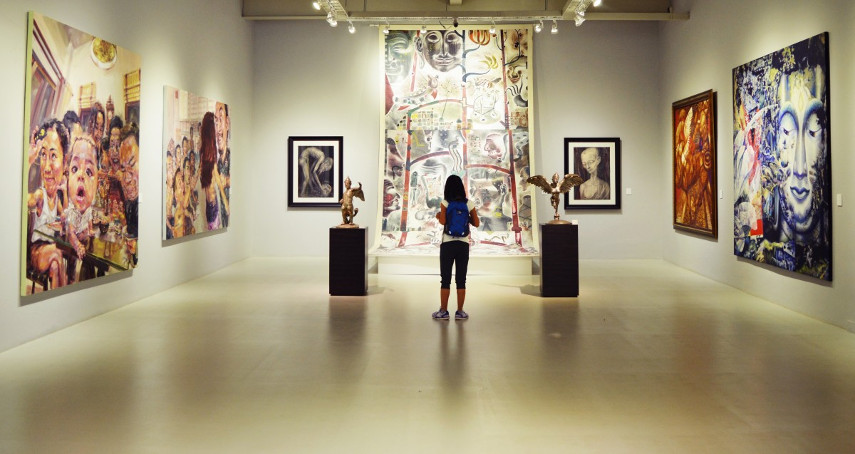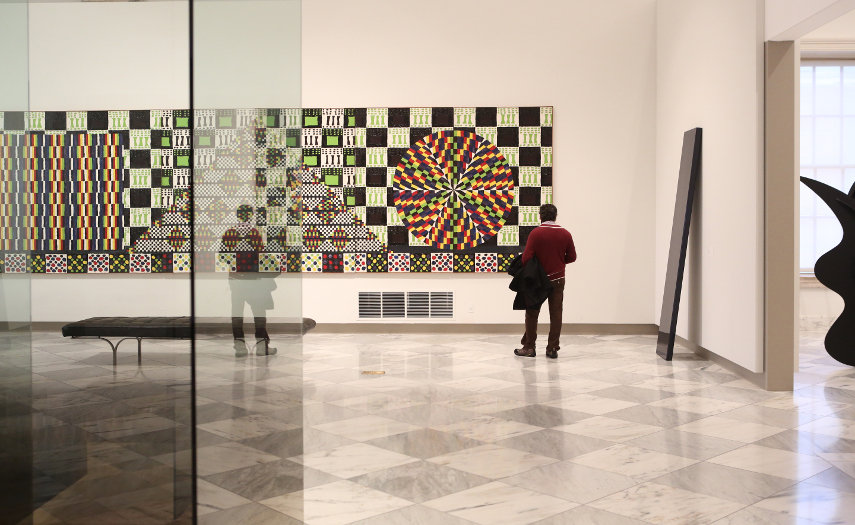[ad_1]
Whether out of ignorance or misinformation, it’s not rare to see novices purchase an artwork without knowing much more than the name of the person who created it. These buyers assume that the signature alone is an adequate justification for investing in an artwork[1] – especially if the artist in question is somewhat of a household name.
More often than not, the buyer ends up being burned, becoming a victim to less-than-scrupulous sellers who are delighted to get more money for mediocre art than it is actually worth.
The key to not making such rookie mistakes? Aside from being aware that not every single piece of art with a known artist’s signature on it is automatically collectible, valuable or superior in quality, it all comes down to doing your homework and researching the hell out of whatever you plan to buy.

Distinguishing Works of Art Worth Buying
If we were to widen the scope of the previous paragraph, we’d end up with the following question: what makes a particular piece of art worth buying?
Or, in other words, what about an artwork makes it good or noteworthy in any respect?
The answer to this question, at least in large part, entails understanding the life and the career of the person who made it.
Not knowing enough about the artist always leads to people overpaying for inferior art. In fact, the sole reason poor quality art even has any market at all is that uninformed people tend to buy it.
If you want to invest in good art and avoid purchasing “duds”, you could learn how to tell the difference between good offers and those that are simply too good to be true.

Tips For Researching Artists and Their Work
We’re now going to go through a selection of tips that’ll help you get to know the artist and the work you’re interested in. These should definitely be applied before you even think about popping up the checkbook:
- The World Wide Web is an astonishing tool when it comes to researching just about anything, so make sure to make the most of it. Search the Internet for information about the artist from as many different sources as possible – ideally, there will be a selection of catalogues raisonnés to choose from, but simple articles or interviews will also suffice.
- Get to know the artist’s reviews to the best of your abilities. Whether in print or online, get as many of these as you can locate and from as many different sources as possible.
- If possible, take advantage of each and every opportunity to see the work in person. This can be done either at galleries or museums, in private collections, or at the artist’s studio.
- Always follow the artist on social media and keep tabs on their website. That way, you can see where they’re showing their work, how productive they are, what other people have to say about their art, what sorts of awards or coverage they receive, how they go about selling pieces, etc. These are all vital pieces of information at this point.
- Do not be too proud to speak with those who are more informed than you currently are. Consider talking with collectors who are more familiar with the artist, galleries who sell or represent him, and even curators or critics if you get a chance.
- This is a no-brainer, really – look at as much art as humanly possible. The only way of learning why one piece is more desirable or expensive than the one next to it is understanding what you are hoping to buy. And there’s no other way of starting to really understand art than to observe it[2].
- Finally, if you’re fortunate enough to have a chance to speak or correspond with the artist directly, seize it. If they’re willing, ask them to tell you about particular career phases or styles of their art. You’d be surprised how often and in-depth artists are willing to discuss their work even if they do not know you personally.

Late VS Early & Mid-Career Artworks
Maybe the most common root of bad art purchases can be found in not understanding the difference between early, mid and late-career artworks, and how they stack up against each other.
All notable artists have periods in their careers when the art they create is deemed to be better than the art made during other periods. The more you research and get to know about an artist, the easier it becomes to identify which pieces belong in which period, as well as where the best places are to find them.
Needless to say, this will also help you figure out fair price ranges for whatever you want to buy.
As an unwritten rule, collectors usually favor early or mid-career works of art over later pieces. Late works can often be too commercial in nature, or second-rate repeats of earlier successes. There are exceptions to this rule, however, like the case is with Grandma Moses, an artist whose late works are highly collectible.
Editors’ Tip: The Art of Buying Art
The best and easiest-to-understand book on how to buy, sell, evaluate, and collect art, The Art of Buying Art is a 284-pages-long guide by Alan S. Bamberger, a noted art expert, author and syndicated columnist. Bamberger provides the information needed to transform anyone into an informed art consumer, to protect collectors from bad buys and to help them locate the best art at the correct prices.
The Final Piece of Advice
Finally, be patient. Don’t go around spending your hard earned money on potential bargain deals until you genuinely know what you’re doing. The risk here simply outweighs potential awards.
We’re aware that getting your basic art education sounds like all work and no play, there’s no going around that fact.
The trick, however, is having the right mindset.
If you truly love art, then learning about it, reading books about it, going places and looking at it, and meeting interesting people who share the same feelings about it shall be pure pleasure, not to mention a great adventure.
The best part? The more “legwork” you do, the better informed you get, and the more discriminating you become as a buyer. And then, once you’re able to identify the perfect artwork and know all about it, buying it comes without risks and is more of a technicality than anything else – aside from the money you have to pay to get it, of course.
References:
- Barton, S., April 18, 2018, Fine Art Can Be A Fine Investment, Investopedia [Jun 20, 2018]
- Messham-Muir, K., October 22, 2014, Three simple steps to understand art: look, see, think, The Conversation [Jun 20, 2018]
Featured image: Observing Art Inside a Shanghai Museum, via pxhere.com. All images used for illustrative purposes only.
[ad_2]
Source link
